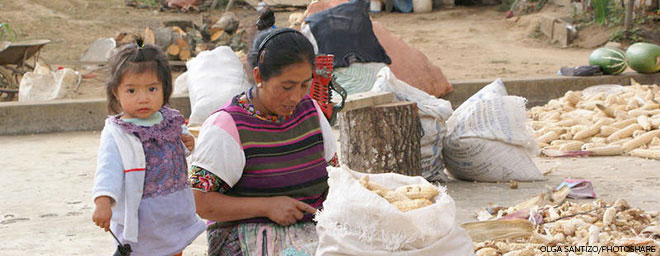
Micronutrient malnutrition is a serious problem in Guatemala, particularly in the Western Highlands. While it is known that the frequency of feeding and diversity of foods offered to young children are low, much less is understood about the extent to which the micronutrient content of the diet of children under 2 years of age and that of pregnant and lactating women can be improved using local foods and whether families are able to adopt improved dietary practices.
This brief reviews results from household trials to determine feasible and acceptable diets with local foods and analyses of nutrient gaps in these diets using Optifood, a software program designed to identify the best combinations of local foods to try and fill nutrient gaps. The results show that diets of pregnant and lactating women and young children in the Western Highlands are not able to meet micronutrient needs given current combinations of local foods and poor access to nutrient-rich foods, fortified blended flour, and/or micronutrient supplements. The brief provides implications that are relevant for improving national programs and policies as well as economic and market access to fortified foods and micronutrient supplements.


